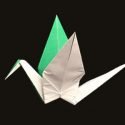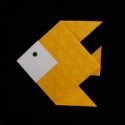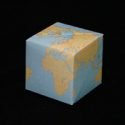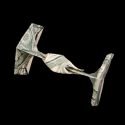Action Origami (Origami Toys)
Action origami models are unique in that they move. The most obvious action models are the paper airplanes . But the oldest action models have been with us for over 400 years.

The cootie catcher may have been invented in the the early 1600’s. This device has had many names: “salt cellar”, “fortune teller”, “flipper”, and “scrunchies”. As well as having many names, the cootie catcher has two functions: it can be used as a toy or, when inverted, as a four-compartment container. Although the cootie catcher and the fortune teller are folded in the same way, they are decorated differently. A cootie catcher is decorated with dots whereas the fortune teller is labeled with numbers or colors and messages.

The inflatable waterbomb was documented by J. Webster in 1614. In his play “The Duchess of Malfi“, he mentions “paper-prisons” where flies were kept so that little boys could hear them buzz. This is taken as strong evidence that paper folding was known in England in the early 1600’s. It also shows that the waterbomb is almost 400 years old!
The flapping bird may have been invented near 1870. It is suggested that a traveling magician, unable to remember the paper crane, invented the flapping bird by accident. Read more about this in David Lister’s essays from BOS.

Today, there are many examples of action or “toy” origami from spinning tops to jumping frogs; chickens that lay eggs, and bunnies that blow up. Many examples of this type of origami are relatively easy to fold. (get diagrams here).

But some modern action models like Spring Into Action created by Jeff Beynon can be quite complex. Watch video here. [Photo by B Trumbore].

- go to Action (Toy) Origami Diagrams
- Home Page
- Free Origami Instructions
- Site Map
- Like Us on Facebook




















